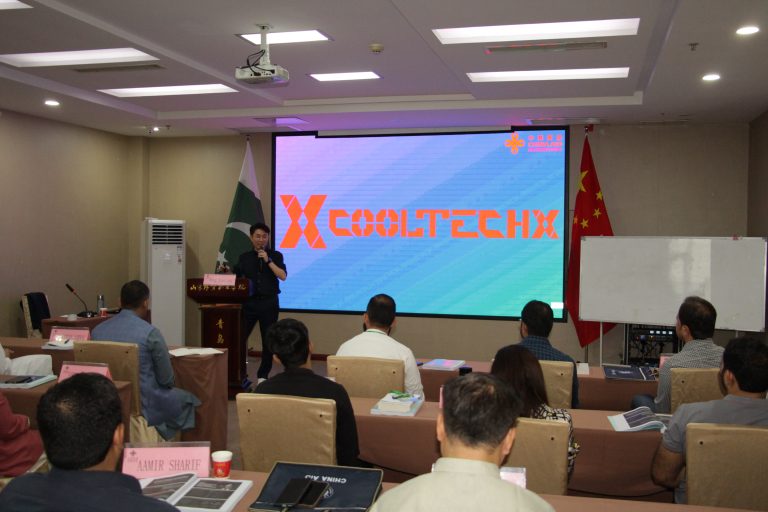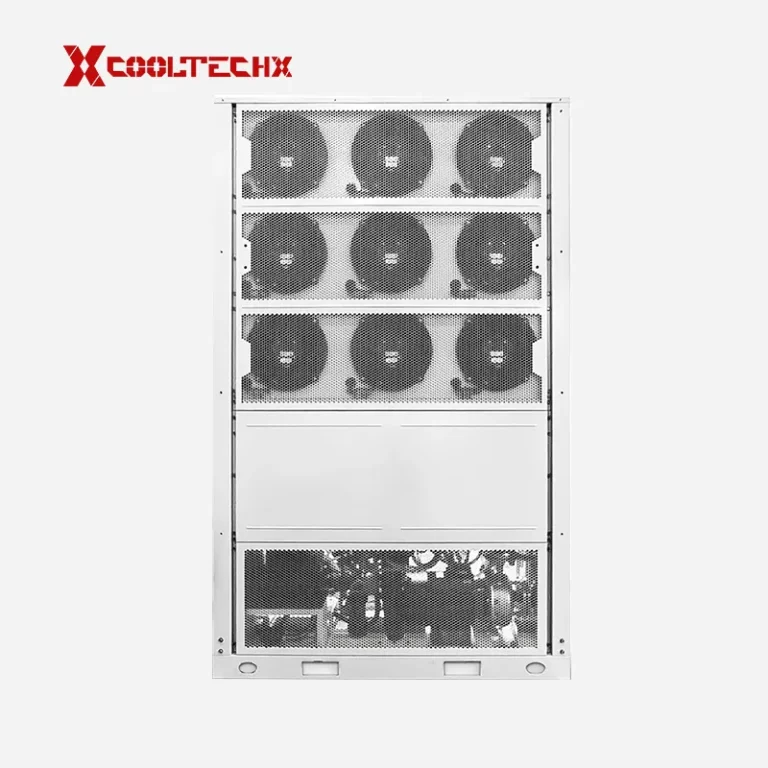You should pick weatherproof electrical enclosures and cooling systems by looking at your environment and equipment first. Think about the weather, dust, and temperature where you will put the enclosure. Choose a system with the right rating for protection. Look at cooling needs, and always check if your enclosure air conditioner supplier gives good support and reliable products.
Key Takeaways
- Pick an enclosure that fits your local weather, dust, and salt. This helps keep your equipment safe.
- Choose the right protection rating. Use NEMA 3R for normal weather. Use NEMA 4X for tough, salty, or wet places.
- Use cooling systems that match your enclosure’s rating. Make sure they handle your equipment’s heat. This keeps things safe and working well.
- Clean and check your enclosure and cooling system often. This stops damage and helps them last longer.
- Work with a trusted supplier. They should have good products, helpful support, and the right certifications. This makes sure everything works well.
Environment
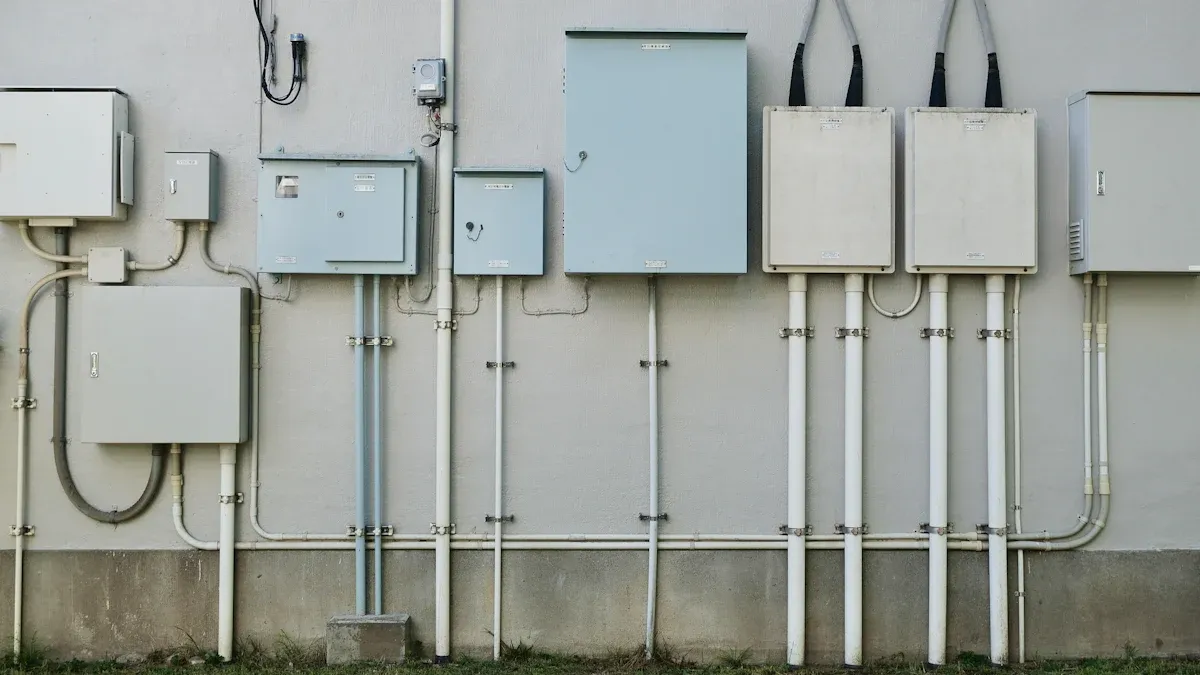
Weather
Check the weather in your area before you pick an enclosure. Weather can change fast and affect your equipment. Here are some things to think about:
- Look at climate data from the past 30 years. This helps you know what weather to expect.
- Watch for temperature, humidity, and wind in your area.
- Rain and sun can make your enclosure wear out faster.
- Find weather data that shows dry bulb temperature, relative humidity, and sky cover.
- Use this climate data to choose the right enclosure for your area.
Tip: If you live where it rains a lot or gets very windy, pick an enclosure with a higher weatherproof rating. This will help keep your equipment safe and working longer.
Dust and Salt
Dust and salt can hurt electrical enclosures over time. If you live near the ocean or in a dry, dusty place, you need more protection. Salt in the air can make metal rust. Dust can block vents and stop cooling from working well. Pick enclosures with tight seals and materials that do not rust. Stainless steel or coated metals are good for salty or dusty places. Look for special gaskets that keep out small particles. Clean your enclosure often to stop dust and salt from building up. This helps your system work well.
Temperature
Temperature changes can be hard on your electrical equipment. Use long-term temperature records to plan for hot and cold days. Experts look at daily temperature cycles and the hottest and coldest days. They check the top 5% of hot days and the coldest 5% of days. In the last 100 years, there are more warm days and fewer cold days. This means your equipment may face more heat stress. Pick enclosures and cooling systems that can handle these new temperatures. This keeps your equipment safe and working during heat waves or cold snaps.
Ratings
NEMA 3R
You need to know what NEMA 3R means before you choose an enclosure. NEMA 3R enclosures protect your equipment from rain, sleet, and snow. These enclosures work well outdoors. They keep out falling dirt and water. You can use them for electrical panels, junction boxes, or control panels outside. NEMA 3R enclosures do not protect against dust or hose-directed water. If you need basic weather protection, NEMA 3R is a good choice.
Tip: Use NEMA 3R enclosures for areas with rain but not much dust or direct water spray.
NEMA 4/4X
NEMA 4 and 4X enclosures give you more protection. These enclosures keep out rain, sleet, snow, and even hose-directed water. NEMA 4X also protects against corrosion. You should pick NEMA 4X if you work near saltwater or in places with chemicals. These enclosures have tight seals. They stop dust and water from getting inside. You can use them in washdown areas, food plants, or near the ocean.
- NEMA 4: Water-tight and dust-tight
- NEMA 4X: Water-tight, dust-tight, and corrosion-resistant
IP Comparison
You may see IP ratings instead of NEMA. IP stands for Ingress Protection. It uses two numbers to show how well an enclosure keeps out solids and liquids. Here is a quick comparison:
| NEMA Rating | IP Equivalent | Protection Level |
|---|---|---|
| 3R | IP24 | Rain, sleet, limited dust |
| 4 | IP66 | Dust-tight, strong water jets |
| 4X | IP66 | Same as 4, plus corrosion safe |
Note: Always check both NEMA and IP ratings. Pick the one that matches your environment best.
Materials
Durability
You want your enclosure to last a long time. Manufacturers test materials by using them a lot. For example, they open and close the door many times fast. This is like using it for years. These tests show if the design or material is weak. You can trust materials that pass tough tests. These tests include vibration, heat, dropping, and hitting. Some companies use computers to guess how long materials last. They check how the material handles stress, heat, and water. If you pick strong materials, your enclosure protects longer. You also help the earth by choosing materials that can be fixed or used again.
Sealed vs Ventilated
You must pick a sealed or ventilated enclosure. Each type has good points:
- Ventilated enclosures dry out much faster than sealed ones.
- Vents at the top and bottom help them dry even more.
- Bigger air spaces inside help water leave quickly.
- The wall and vent type changes how fast it dries.
- Sun and wind help ventilated enclosures dry, but not sealed ones.
- Ventilated enclosures need less cooling in hot weather, but sealed ones may be better in cold places.
Tip: If you think there will be lots of water or heat, a ventilated enclosure helps keep things dry and cool.
Corrosion Protection
Picking the right material stops rust and damage. Some new materials and coatings protect well from corrosion. The table below shows how different materials fight rust:
| Material Category | Examples/Types | Corrosion Protection Benefits and Applications |
|---|---|---|
| Alloys | Stainless steels, Titanium alloys, Nickel-based alloys | High corrosion resistance in marine, aerospace, and chemical settings. |
| Composites | Polymer matrix, Ceramic matrix | Strong, durable, and resist corrosion in cars, planes, and ships. |
| Coatings | Ceramic, Epoxy, Polyurethane | Add a protective layer to stop rust and wear in many industries. |
| Nanotechnology-Based | Nanoparticle-reinforced, Nanostructured | Boost corrosion resistance and strength with tiny particles. |
| Advanced Manufacturing | 3D printing, Powder metallurgy | Make complex shapes that resist corrosion better. |
| Modeling | Computer simulations | Help predict and improve corrosion protection. |
Note: For places with salt or chemicals, pick materials or coatings that stop rust. This keeps your enclosure strong and your equipment safe.
Cooling Needs
Heat Load
You must know how much heat your equipment makes. This is called the heat load. If you do not measure it right, your cooling system may not work well. You can use a simple formula to estimate heat load:
- Q = m × Cp × ΔT
- Q is the heat load (in watts or BTU/hr).
- m is the mass flow rate (how much air or liquid moves each second).
- Cp is the specific heat (how much energy it takes to heat up the material).
- ΔT is the temperature change.
To get good results, you should use accurate tools:
- Type “T” thermocouples can measure temperature with an accuracy of ±0.2°F.
- Turbine flow meters can measure flow with an accuracy of ±1%.
- If you do not have a flow meter, you can collect fluid in a container and use a timer to find the flow rate.
Tip: Always check your thermocouples before using them. Put two thermocouples together when there is no heat load. If they show different numbers, fix your readings. Even a small mistake, like ±0.5°C, can change your heat load by up to 10%.
Measuring heat load the right way helps you pick the best cooling system. If you guess or use wrong numbers, your equipment might get too hot or waste energy.
Temperature Impact
Temperature changes can change how your cooling system works. You can use data and math to see how temperature changes affect your costs and equipment. Here is how you can study the impact:
- Use regression analysis to connect your costs or output to cold water temperature.
- Make performance curves to show how your system works at different temperatures.
- Create economic impact curves to see how temperature changes affect your money.
- Add weather data, like wet-bulb temperature and seasonal changes, to your models.
- Compare your current system’s performance to its original design to find losses.
- Test different repair or upgrade options, such as changing fill media or upgrading fans.
- Use financial tools like payback period, internal rate of return (IRR), and net present value (NPV) to pick the best solution.
- Build models that include all weather and operating conditions to make the best choice.
When you use these steps, you can see how temperature changes affect your system and your wallet. For example, a study found that cooling energy use can go up by 7.6%–9.8% for every 1°C increase in outdoor temperature. This means even small temperature changes can make a big difference in your cooling needs and costs.
Note: If you plan for temperature swings and use the right data, you can save money and keep your equipment safe.
Overheating Risks
Overheating can cause big problems for people and equipment. You need to know the risks so you can protect your system. Here are some important facts:
- A major heat event in California in 2008 caused 650 deaths, 1,600 hospitalizations, and over 16,000 emergency room visits. The health costs reached nearly $5.4 billion.
- Vulnerable groups, such as the elderly, children, and low-income families, face higher risks from heat.
- About 50% of living rooms in homes of vulnerable people overheat, compared to 25% in other homes.
- Low-income communities often have less access to cooling, which increases health risks.
- Hospital visits for kidney and asthma problems go up during heat waves, especially in poor areas.
- Sudden temperature changes can raise the risk of heart attacks and death, especially for people with fewer resources.
- Good ventilation and cooling systems lower the risk of overheating and health problems.
| Statistic/Insight | Details |
|---|---|
| Overheating risk in Ireland’s housing stock | Up to 10% of existing occupied dwellings |
| Number of individuals potentially affected | Approximately 519,200 |
| Trend over time | Risk expected to increase due to climate change |
| Vulnerable dwelling types | Compact dwellings, mid and top-floor apartments, modern or deeply retrofitted buildings |
| Climate factors | Increased ambient temperatures, solar radiation, shift in peak design month (July to August), reduced mean wind speeds |
| Thermal mitigation note | Diurnal temperature swing not predicted to reduce, supporting use of thermal mass |
Alert: Overheating is not just about comfort. It can break equipment, hurt people, and cost a lot of money. Always plan for good cooling and ventilation to keep your system and people safe.
Cooling Options
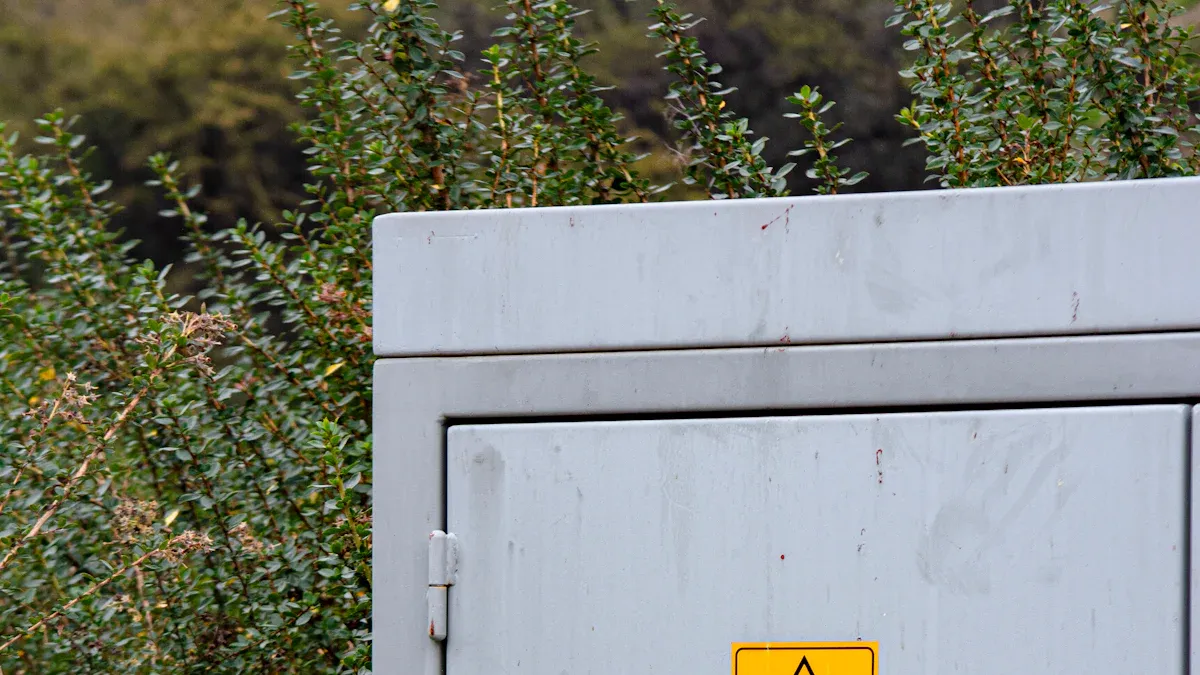
Ventilation
Ventilation cools your electrical enclosure by moving air. Fans or vents bring in fresh air and push out hot air. This works best if the outside air is cooler than inside. You should check airflow, temperature, and humidity at different spots to see how well it works.
| Parameter / Statistic | Description |
|---|---|
| Air temperatures | Measured at supply, breathing zone, and exhaust locations |
| Relative humidity | Recorded at supply, breathing zone, and exhaust |
| Globe temperature | Measured at head level to check radiant heat |
| Air velocities | Measured at six points for accuracy |
| Supplied and exhausted airflow rates | Controlled and measured for ventilation rates |
| CO2 concentrations | Used as a tracer gas for ventilation checks |
| Calculated parameters | Mean local ventilation effectiveness and standard deviation |
| Airflow patterns | Simulations show velocity and flow directions |
| Statistical analyses | Tests show differences in ventilation effectiveness |
| Energy performance indices | Heat Removal Efficiency, Thermal Utilization Effectiveness, ETUE |
| Velocity distributions around occupants | Flow profiles show how ventilation modes work |
Different ventilation types change how air moves. Mixing ventilation gives steady airflow around equipment. Displacement ventilation makes two main flows that move air away. Personalized ventilation creates fast air near the equipment, cooling it quickly. Where you put the exhaust vent changes how air moves and how well the system cools.
Tip: Use the Equivalent Thermal Utilization Effectiveness (ETUE) index. It helps you see how well your ventilation uses air for cooling. ETUE gives a better idea of energy use than old ways.
Air to Air
Air to air cooling uses heat exchangers or fans to move heat out. It does not use water or other liquids. You can use this where water is not easy to get or when you want a simple system.
Power Usage Effectiveness (PUE) helps you see how much energy your cooling uses. Most data centers have a PUE of about 1.55. The best ones reach a PUE of 1.2. If you switch from all air cooling to mostly liquid cooling, you can cut power use by up to 27%. This means air to air cooling works, but liquid cooling saves more energy in hot places.
| Cooling Method | PUEcooling Value |
|---|---|
| Room-based Air Cooling | 1.33 |
| Rack-based Air Cooling | 1.28 |
Rack-based air cooling uses less energy than room-based air cooling. You can also use the Effective Cooling Ratio (ECR) to check your air cooling system. ECR looks at temperature, airflow, and energy use together. This helps you find the best setup for your needs.
Air to Water
Air to water cooling uses water to take heat away from your enclosure. Water can carry much more heat than air. Liquids have a specific heat capacity 1,000 to 3,500 times higher than air. They also have thermal conductivity 15 to 25 times higher. This means water cools your equipment faster and better.
- Water-cooled backplanes in cold plate liquid cooling systems can handle 8 to 35 kW of heat, depending on the design.
- Using cold plate liquid cooling with air cooling in data centers lowers power use and makes things work better.
- Cold plate-based liquid cooling helps with high heat and power use in tight spaces.
- The system uses cold plates, pumps, chillers, and distribution units. Water does not touch the electronics.
You should use air to water cooling if you have lots of heat or need very good cooling. This works well in small spaces or if you want to save energy.
Air Conditioners
Air conditioners use refrigerants to move heat from inside to outside. They work well in hot or humid places where other cooling does not keep things cool enough. You can check how well an air conditioner works by looking at its Energy Efficiency Ratio (EER) and Coefficient of Performance (COP).
- EER = Cooling Capacity (Qc) / Energy Consumption (Ec)
- COP = Heating Capacity (Qh) / Energy Consumption (Eh)
These numbers show how much cooling or heating you get for each unit of energy. Tables of performance data for split air conditioners show energy use and efficiency. You can also use hourly energy use numbers to see how much power your system uses during the day.
A study of 1,325 air conditioners showed that prediction models for daily cooling energy use are accurate. This means you can trust these numbers when planning your system.
Note: Pick an air conditioner with a high EER or COP. This saves energy and lowers costs.
Matching Ratings
You must match your cooling system’s rating to your enclosure’s rating. If your enclosure has a NEMA 4X or IP66 rating, your cooling system must meet these too. This keeps water, dust, and other hazards out.
- Use sealed cooling units for NEMA 4/4X or IP66 enclosures.
- Pick corrosion-resistant materials for salty or chemical-rich places.
- Make sure all gaskets, fans, and vents meet the same protection level as the enclosure.
Alert: If your cooling system has a lower rating than your enclosure, you risk leaks, dust, or corrosion. Always check the ratings before you install your system.
Installation and Maintenance
Mounting
Mounting your electrical enclosure the right way keeps it safe. It also helps your equipment work well. Here are some simple steps to follow:
- Only use zip ties on fiber trunk cables at furcation points with metal sleeves. Use Velcro in other places to keep fibers safe.
- Check and clean fiber optic connectors before you put them in. Use a microscope and a one-click cleaner. Keep the caps on until you are ready to install.
- Organize cables by running jumper cables and patch cords both sideways and up and down. Make sure patch panel sides match the active ports.
- Do not bend, kink, or pinch fiber cables. This stops damage.
- Do not pull fiber cables too hard when you put them in. This keeps them strong.
- Test everything after you finish installing. Look for breaks, shorts, correct wiring, and good grounding.
- Write down all your test results. Include things like attenuation values, test limits, link length, test dates, who did the test, instrument details, and calibration dates. Keep both digital and paper copies.
Tip: If you mount and manage cables carefully, you will have fewer problems later. It also makes fixing things easier.
Condensate
Condensate is water that forms when cooling systems take moisture from the air. If you do not handle it, water can build up and cause damage. A case from Hydro Inc. showed that watching the system and getting expert help fixed a broken condensate pump. This shows how important it is to take care of problems early.
You can make condensate management better by:
- Watching the Condensate Recovery Factor (CRF) to see how well your system works.
- Putting in good meters to check condensate and steam flow.
- Checking right away if CRF drops or changes.
- Making and following Standard Operating Procedures (SOPs) for pumps, vessels, and steam traps.
Alert: If you check your system often and fix things fast, you keep it dry and working well.
Reliability
You want your enclosure and cooling system to last a long time. Watching your system in real time and getting expert advice helps you find problems early. This stops outages. Studies show that planned maintenance and using different methods make systems more reliable over time.
| Maintenance Action | Benefit |
|---|---|
| Scheduled inspections | Find problems before they get bad |
| Real-time monitoring | Spot trouble quickly |
| Data analysis | Plan better fixes |
| SOPs for repairs | Make sure repairs are done right |
- Use data from a long time to pick the best times for maintenance.
- Cleaning and fixing things on time helps your equipment last longer.
- Good records help you see how things are working and plan upgrades.
Note: Reliable systems save money and stop downtime. Doing regular maintenance is the best way to keep things working.
Enclosure Air Conditioner Supplier
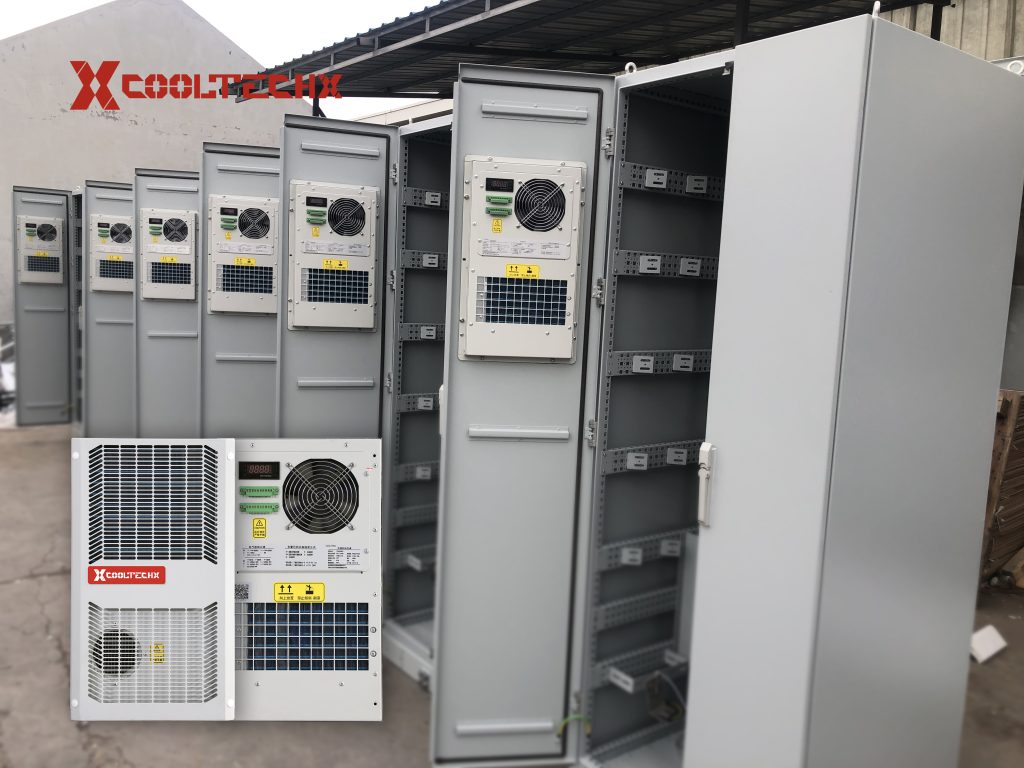
Supplier Evaluation
When you pick an enclosure air conditioner supplier, do not just look at price. A good supplier helps keep your equipment safe and cool. Here are some things to check:
- Does the supplier answer your questions quickly?
- Are the right products in stock when you need them?
- Can the supplier fix problems fast if something breaks?
- Do they have different mounting options, like side-mount or top-mount?
- Can you get products with the cooling power and corrosion protection you need?
- Does the supplier offer remote monitoring or special features for tough places?
- How much energy do the products use? Look at BTUH ratings and temperature ranges.
- Can the supplier’s team help you with special problems?
A strong supplier gives you lots of choices and helps you find what works best for you.
Certifications
Certifications show that a supplier meets high standards. You should look for suppliers with products tested by trusted labs. These certifications include UL, cUL, and CE. Some suppliers also have special certifications for hazardous areas.
| Certification Name | Issuing Organization | Why It Matters |
|---|---|---|
| CSQP | ASK | Shows the supplier has skilled quality professionals who track data and control processes. |
| UL, cUL, CE | National/Regional | Proves the products meet safety and quality rules. |
Suppliers with these certifications have passed hard tests. This means you can trust their products to keep your equipment safe.
Support
You need a supplier who gives strong support. Good support means you get help fast when you need it. Check how the supplier handles service tickets and repairs. Look for these signs of good support:
- Quick answers to your questions
- Clear steps for fixing problems
- Support teams that work all day and night
- Training for their engineers
- Plans for holidays and busy times
A reliable supplier keeps track of how long it takes to fix problems and looks for ways to get better. They use data to spot issues early and keep your system running. When you pick a supplier with great support, you lower your risk of downtime and keep your equipment safe.
You can find the right weatherproof enclosure and cooling system by following some simple steps:
- Choose an enclosure with at least a NEMA 3R rating for basic weather safety.
- Look at your local weather, dust, and salt to pick the best rating and cooling type.
- Only use ventilated enclosures if they stay dry during heavy rain.
- If it gets very hot, use forced ventilation or sealed enclosures.
- Pick cooling systems that keep the enclosure sealed, like air-to-air or air-to-water heat exchangers.
- In places that are hot and humid, use enclosure air conditioners for strong temperature control.
- Always work with a trusted enclosure air conditioner supplier for good help and long-lasting products.
Remember, when you match your enclosure and cooling system to your area, your equipment stays safe and works longer.
FAQ
What is the best material for a weatherproof electrical enclosure?
You should pick stainless steel or coated metal for most outdoor areas. These materials resist rust and last a long time. For salty or chemical-rich places, stainless steel works best.
How do you know if your enclosure needs extra cooling?
If your equipment gets hot or shuts down, you need more cooling. Use a thermometer to check inside temperatures. If it goes above the safe limit, add a cooling system.
Can you use a regular air conditioner for an electrical enclosure?
No, you should use an enclosure air conditioner. Regular air conditioners do not seal out dust or water. Enclosure air conditioners match the protection rating and keep your equipment safe.
How often should you clean or check your enclosure?
Check your enclosure every month. Clean dust, salt, and dirt from vents and seals. Look for rust or water inside. Regular checks help your equipment last longer.
What does NEMA 4X mean for your enclosure?
NEMA 4X means your enclosure keeps out dust, water, and resists rust. You can use it in wet or salty places. It gives strong protection for your equipment.


